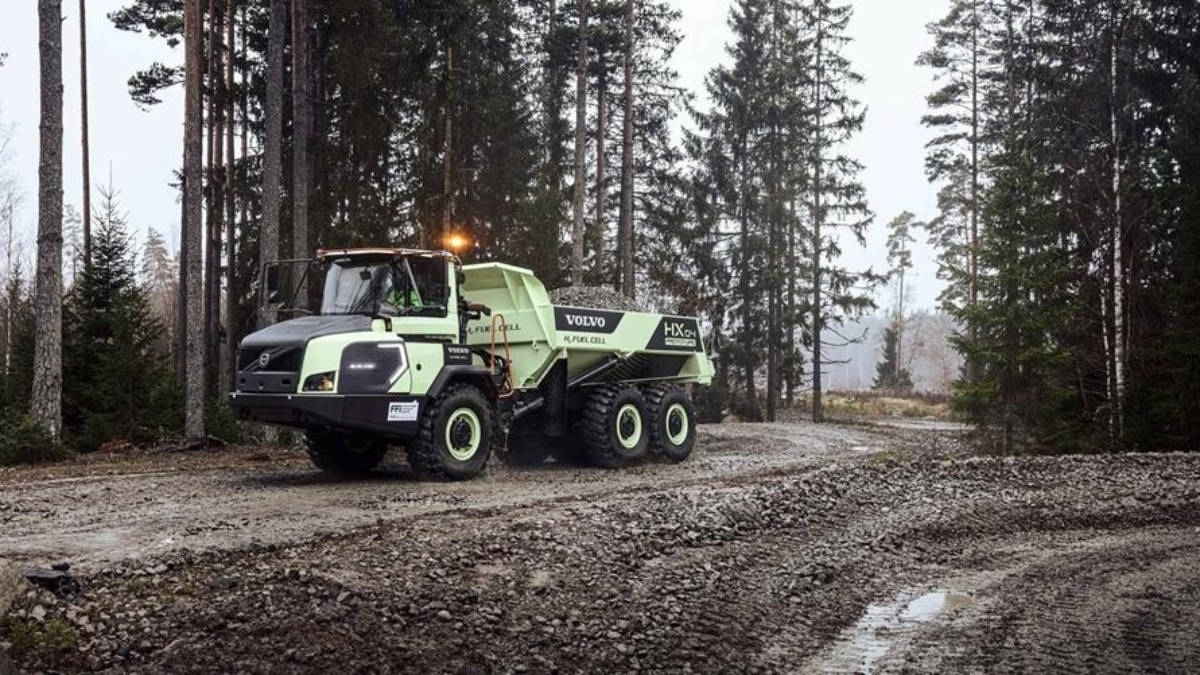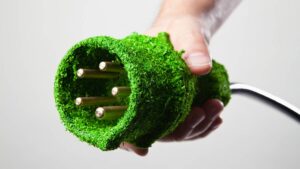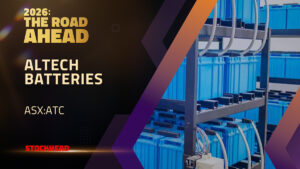ASX Renewable Energy Stocks: Volvo tests world’s first hydrogen-powered hauler

Development and building of the hydrogen hauler prototype has been carried out at Volvo CE’s facility in Braås, Sweden. Pic: Volvo CE
- The VOLVO HX04 is the worlds first fuel-cell hauler prototype
- It is the result of a research project conducted between 2018 and 2022
- EGR’s processing tech has been used to purify graphite particles recovered from end-of-life lithium-ion batteries
In its aim to break new ground in hydrogen technology, Volvo Construction Equipment (Volvo CE), subsidiary of the Volvo Group, has started testing the world’s first fuel-cell articulated hauler prototype, the Volvo HX04.
The Volvo HXO4 is the result of a research project which was conducted between 2018 and 2022, with funding from FFI, a national collaboration between the Swedish Innovation Agency VINNOVA, Swedish Energy Agency, and Swedish Transport Administration to support sustainable vehicle strategic research, innovation and development.
Results of the project will provide important insights into the possibilities provided by hydrogen and fuel cells as Volvo CE continues research for its future product development programs.
While still an early prototype, Volvo CE’s head of advanced engineering Carolina Diez Ferrer said this innovation will give valuable insights into the opportunities of hydrogen in the energy transformation alongside battery-electric solutions.
“We believe that by exploring multiple technologies and working in partnership we can create the best path forward to decarbonise the construction industry,” she said.
The development and building of the six-wheel prototype has largely been carried out at Volvo CE’s facility in Braås, Sweden – the same location where Gravel Charlie, the world’s first hauler was born back in 1966 – giving the Volvo HX04 the nickname ‘Electric Charlie’.
To ASX renewable energy news:
EcoGraf (ASX:EGR)
EGR’s HFfree proprietary processing technology has been used to purify graphite particles recovered from the end-of-life lithium-ion batteries.
The positive findings have been reported following a research program conducted by the Helmholtz Institute in Germany.
EcoGraf contributed its environmentally superior HFfree processing expertise to the research program and purified the recovered graphite particles to battery grade specification.
The German Government funded program then compared the electrochemical performance of the recycled EcoGraf HFfree™ graphite with several commercial battery graphite products
EGR said in a market announcement this morning the testing confirmed the electrochemical performance of the EcoGraf HFfree recovered graphite matches that of the brand-new commercial anode graphite.
Frontier Energy (ASX:FHE)
FHE has revealed green hydrogen production could be achieved significantly earlier than originally planned at the Bristol Springs Project (BSS Project) in Western Australia, following the return of preliminary results from its Green Hydrogen Study.
“This opportunity is only possible due to the BSS Project’s unique location near Waroona, Western Australia,” the company highlighted.
“The location on free-hold land, proximal to existing grid (SWIS), gas and water infrastructure, reduces overall costs when compared to projects in more remote areas.
“Furthermore, the proximity to an existing and emerging green hydrogen domestic market provides a pathway to hydrogen sales.”
FHE managing director Mike Young said as part of the study, the Xodus Group was asked to determine what size solar production, as a minimum, would be required to be able to commence green hydrogen production.
“We originally anticipated this would be larger than the Stage One Project (114Mwdc) to justify the additional capital costs associated with hydrogen production,” he added.
“The BSS Project is, however, uniquely located around significant existing infrastructure, which is critical for the hydrogen industry, meaning our initial capital costs will be significantly less compared to more remote projects for first production.”
Related Topics
UNLOCK INSIGHTS
Discover the untold stories of emerging ASX stocks.
Daily news and expert analysis, it's free to subscribe.
By proceeding, you confirm you understand that we handle personal information in accordance with our Privacy Policy.








